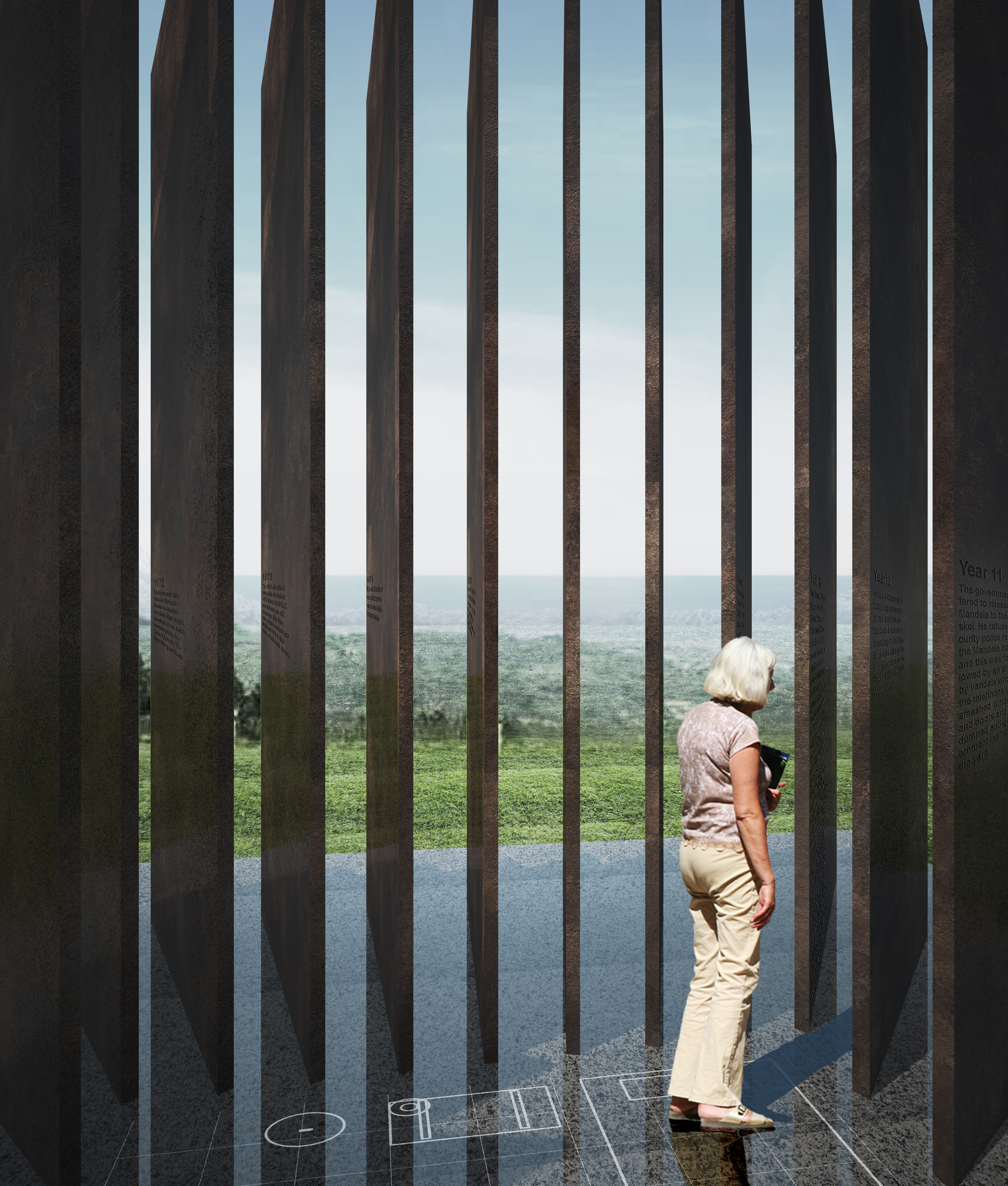
Open Imprisonment
As Alois Riegl defined it, the memorial is the building objects or spaces for the purpose of keeping particular human deeds or destinies. It reflects historical action, but critically, it also shapes our future. This task brings to light the implicit liability of memorialization. New construction in remembrance of the past can first, manipulate public reception toward an authority’s political inclination. If for instance the figure and references are overly emphasized, the memorial engages with the public in very linear way, strongly framing a viewpoint which affects public perception. Second, especially for subsequent generations without direct experience of the event, a memorial risks becoming a mere sensational and artistic expression. Its didactic function weakens, leaving its viewers lost between its artistic value and a commemorative value.
Open Imprisonment proposes to overcome this dilemma, pursuing a balance between art and education, having clear and irrefutable evidence for its educational capacity and didactic function, while also providing an artistic mechanism to critically engage the public. In this way the memorial allows its users the opportunity to explore different ways of understanding Nelson Mandela.

Open Imprisonment houses a central 8’x7’ space, like the cell on Robin Island where Mandela was imprisoned. The cell space is framed by 27 walls, angled to point inward, representing the 27 years in prison. Approaching from the park outside, the memorial looks very much like a closed and solid object; once inside however, viewers suddenly encounter expansive views of the scenic landscape around them. Inscribed on the floor are the outlines of the items Mandela had used. These suggest to artistically connecting the sense place to Mandela’s struggle and eventual triumph. An implication of time is inscribed on its walls. On the exterior, each wall is dated by year and engraved with a statement contextualizing global events at that time. On the interior, each wall shows the South African history that surrounded and implicated Mandela during his imprisonment.

Therefore, a walk around the exterior of the memorial will set the global stage for the viewer and also allow them to grasp the length of time Mandela spent imprisoned, 27 years. Once inside, the viewer will read Mandela’s timeline, including major milestones of his life, South African history and his memoirs, instigating thoughts of how Mandela’s actions and life have had worldwide implications. In this way, the memorial strives to initiate a dialogue between personal and collective memory, between Mandela’s personal history and the events that shaped global history during his imprisonment.

Open Imprisonment is inexorably linked to the life of Nelson Mandela who was seen by the world as an imprisoned man but whose vision and perseverance penetrated the walls of his cell, extending his fight for freedom to every corner of the world.



Team: Jin Young Song, Shaun Irlam and Matt Rosen